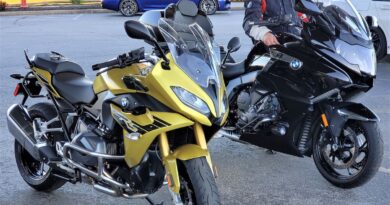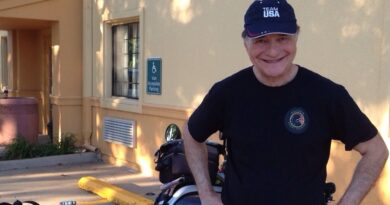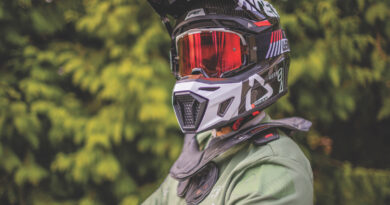Paul B. provides a day at the track
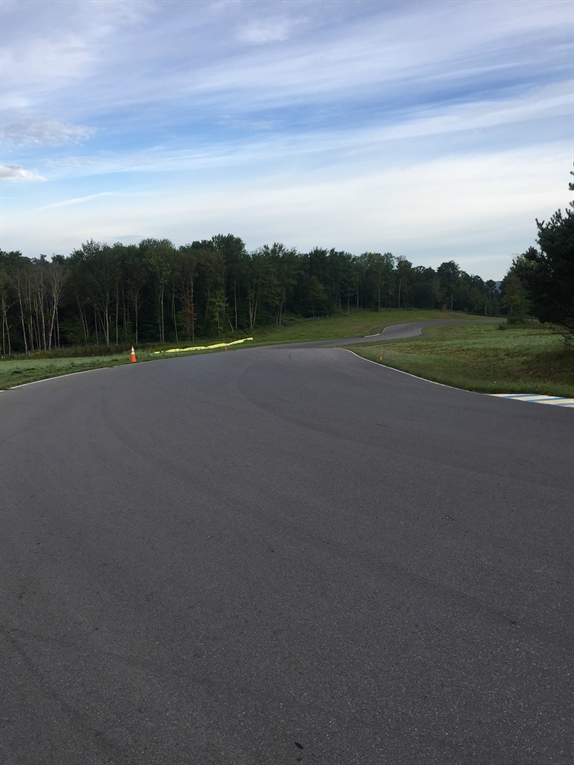 Like sailing and skiing, the physics of moving your weight on a motorcycle and applying subtle inputs can significantly impact your direction. Recently, I had the opportunity to experiment with this in a highly controlled setting, where I was able to learn and practice new skills.
Like sailing and skiing, the physics of moving your weight on a motorcycle and applying subtle inputs can significantly impact your direction. Recently, I had the opportunity to experiment with this in a highly controlled setting, where I was able to learn and practice new skills.
My practice sessions were at the New York Safety Track in Davenport, New York along with twenty other riders on a variety of machines. NYST is a two-mile, two-lane circuit with multiple curves and elevation changes and a stretch that doubles as a non-towered landing strip. We were attending the On-Track Corner Confidence Course developed and taught by Jon DelVecchio of Street Skills.
Our day started early with a safety check, followed by a rider’s briefing where Jon introduced the track rules and the core concepts of “Straight and Flat” and “Kissing the Mirror.” Straight and flat references the most stable and virtuous attitude for a road rider. Straight – the motorcycle standing straight up – provides the largest possible contact patch between the tire and the road surface. Flat – flattened suspension – means not bottomed out by abrupt deceleration nor overly extended by abrupt acceleration.
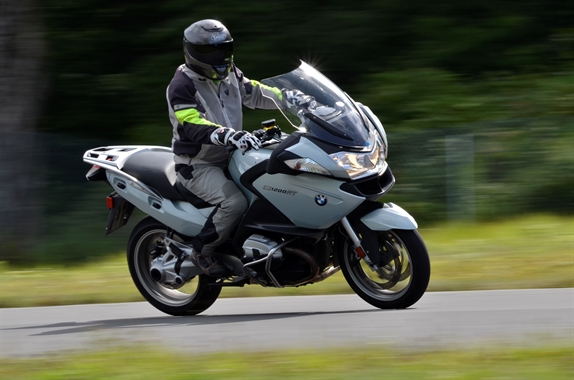
“Kissing the mirror” is a cute way to remember to really move the upper body to the inside on a curve – kiss the mirror, get it? By kissing the mirror, we corner faster and straighter while maintaining as large a contact patch as possible.
The remainder of the morning was spent riding the track and practicing the concepts. We were encouraged to challenge, but not exceed, our limits. I heard someone say a smart rider doesn’t crash their first day at the track!
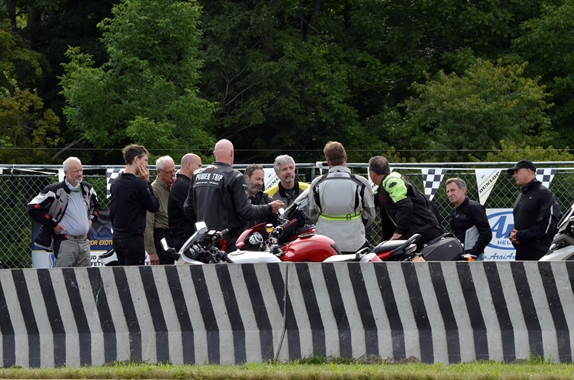
There were several rider coaches in addition to Jon, which meant everyone received personalized attention and guidance. I was able to follow rider coach Britton around the track several times at increasingly tighter lines and faster speeds. I can’t tell you how fascinating and exhilarating it is to follow an accomplished rider through a sequence of curves without having to worry about oncoming traffic, road debris or guide rails.
We had several track-side huddles. I mentioned to Jon that I was consistently scraping pegs in a decreasing radius left-right-left sequence of curves nicknamed “The Trap.” He suggested I “kiss the mirror” more and lean the bike less. It worked!

The class layers in concepts and skills as the day goes on. For example, Jon demonstrated how brakes work linearly and progressively. He showed how the front brake can be applied so gently that the only effect is to engage the tail light. Once the application of the brake begins, you can apply gradual pressure and ever so slightly squeeze brake pad against disc. The intent is to stay on the brakes lighter and longer into a curve, enhancing stability and maneuverability. This is the essence of straight and flat.
After lunch Jon took us to the heart of the course and introduced trail braking. Most of us had heard of trail braking in MSF classes, from rider buddies or online forums, but none of us really understood what it was, how to do it or why. Jon explained trail braking is a cornering technique performed primarily with the front brake, allowing the rider to brake deeper into a corner and gradually releasing the brakes. He explained that by mastering the transition from throttle to brake and back to throttle we could become very confident and happy with our speed and direction through any curve.
And that is how I spent the rest of my day – on the track, practicing feather-light brake-to-throttle transitions as I entered and exited curves, experimenting with trail braking, entry lines, corner speed and mirror kissing.
I logged 72 laps or almost 145 miles. I didn’t clock my times and therefore can’t say with certainty that I’m any faster. But I enhanced my understanding, appreciation and confidence with respect to what is happening beneath me. This is the goal of On Track Cornering Confidence – to improve street rider confidence and competence by imparting an essential track skill – trail braking – in a safe, fun and technical environment.
My weekend of learning was made possible by the MOA Foundation’s Paul B. Scholarship program. I applied for a Paul B. Scholarship to attend the training of my choice. This scholarship program shares my commitment to formal training, whether on the road, dirt or track. It’s a great way to make new friends and improve riding skills. Visit bmwmoaf.org/paulb for more information on the program.
Photos courtesy of Brain Finch of 572Creations.

